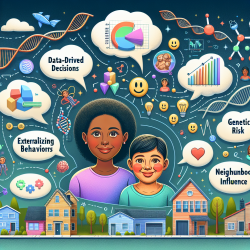Boost Your Skills with Data: Insights from Medical Student Substance Use Research
As practitioners dedicated to creating positive outcomes for children, it is essential to stay informed about the latest research and trends in health and wellness. One recent study that offers valuable insights is "Prevalence, perceptions, and consequences of substance use in medical students" by Ayala et al. (2017). This research provides a comprehensive look at the substance use patterns among medical students and highlights the need for effective intervention strategies. Here, we explore the key findings and discuss how practitioners can use this data to improve their skills and encourage further research.
Key Findings from the Research
The study surveyed 855 medical students from 49 medical colleges across the United States, revealing significant substance use patterns:
- 91.3% of medical students consumed alcohol in the past year.
- 26.2% used marijuana in the past year.
- 33.8% reported binge drinking (five or more drinks in one sitting) in the past two weeks.
- 40% were unaware of their medical institution’s substance-use policies.
These findings indicate that substance use is prevalent among medical students and is associated with various negative consequences, including interpersonal altercations, serious suicidal ideation, cognitive deficits, compromised academic performance, and driving under the influence.
Implementing Research Outcomes
Practitioners can use the insights from this study to enhance their skills and improve outcomes for children and young adults. Here are some actionable steps:
1. Promote Awareness and Education
Given that 40% of medical students were unaware of their institution’s substance-use policies, it is crucial to promote awareness and education about substance use and its consequences. Practitioners can develop educational programs and workshops that inform students about the risks associated with substance use and the available resources for help.
2. Early Screening and Intervention
Early intervention is key to preventing substance-use disorders. Practitioners should implement regular screening for substance use among students and provide timely interventions. Utilizing tools like the Core Alcohol and Drug Survey can help identify at-risk individuals and offer appropriate support.
3. Foster a Supportive Environment
Creating a safe and supportive environment where students feel comfortable discussing their substance use without fear of backlash is essential. Practitioners can establish confidential counseling services and peer support groups to encourage open dialogue and provide necessary assistance.
4. Encourage Further Research
The study highlights the need for updated, comprehensive research on substance use patterns among medical students. Practitioners should advocate for and participate in further research to better understand the factors influencing substance use and develop more effective prevention and intervention strategies.
Conclusion
By leveraging the findings from this research, practitioners can enhance their skills and contribute to creating healthier environments for children and young adults. Promoting awareness, early intervention, and a supportive atmosphere are critical steps in addressing substance use among medical students. Additionally, encouraging further research will help us stay informed and continuously improve our practices.
To read the original research paper, please follow this link: Prevalence, perceptions, and consequences of substance use in medical students.










